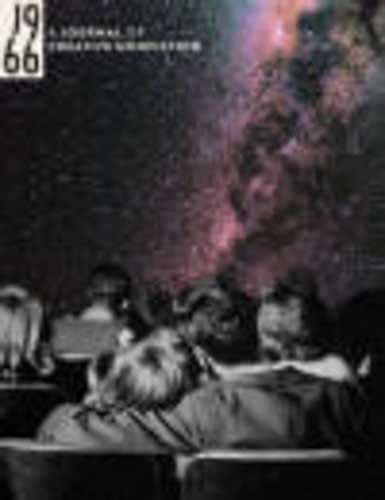1966 – Spring 2014
If Miya Pleines’s “These Orbits, Crossing” is the first thing you read from 1966 (it’s the first piece in this issue), I promise you’ll continue on. Mixing research about flying and falling, alongside memories of her grandfather, Pleines crafts an essay that isn’t just a memoir; it connects to all of us:
If Miya Pleines’s “These Orbits, Crossing” is the first thing you read from 1966 (it’s the first piece in this issue), I promise you’ll continue on. Mixing research about flying and falling, alongside memories of her grandfather, Pleines crafts an essay that isn’t just a memoir; it connects to all of us:
Planet Earth is orbiting around the sun at a rate of 30 kilometers per second. Which is to say that our home is falling towards the surface of the sun at the same speed that the sun’s surface is falling away from us. Which is to say our planet exists in a perpetual state of falling. . . . we are always falling as well. When we take the dog for a walk, we are falling . . . When we are falling on our matresses at night. . . . When we write a letter, say ‘I love you,’ pour ourselves a drink, we are falling. We will never stop our descent . . .
It is the mission of 1966 to celebrate “research-driven creative nonfiction—prose that turns information into story and facts into art.” But if you think this may include scholarly work, well, then, you’d be wrong. It’s creative nonfiction that offers more than just a personal story.
In this issue, we get to learn a little bit about penguins, right alongside Carolyn Kraus as she attends a class at the Detroit Zoo. Throughout “A Thing with Feathers,” she expresses her confusion in the vast interest in the animal, but despite that, she too attends and has her own questions. Following a chronological format, the piece is a delightful read, and Kraus isn’t afraid to ask the instructor the questions we are all wondering.
The detail in Alica Forneret’s “Crawfish” is what makes it so enticing to read. The temperature is rising in New Orleans:
Balmy evenings welcome entire neighborhoods onto the streets to chug malt liquor from sweating 40 bottles, lounge lazily on porches of their neighbor’s shotguns, and trade work clothes for unbuttoned booty shorts and stained tank tops. People move through the city in packs, sharing sweat-soaked handkerchiefs, scratching each other’s bug bites that are out of reach, and recognizing Lent on “meat-free” Friday nights, crowding around folding tables covered in empty crawfish shells.
The whole piece, every single sentence, is littered with this same style of great description and excellent language. It’s a piece you certainly do not want to miss.
There’s also essays from Dave Madden, Natalie Vestin, Sharman Apt Russell, Dawn Shand, Lori A. May, and Nancy Penrose—and you won’t want to miss a single one! I greatly appreciate the goals of 1966 and am happy to know that such a place exists for writing such as this.
[1966journal.org]






